
Presents of Presence
"Children need your presence more than your presents" Jesse Jackson
Each day, I am only convinced more and more based on my experiences in community-building and social outreach that children truly are the future, and that we must embrace and devote ourselves to the whole of the child not just through school, but from the neighborhood, the community, the household as well.
Unfortunately, when I grew up much of my early life in Arvada, Colorado, I didn’t get much guidance attending Warder H. Elementary school. They lacked a conflict mediation program, so I wasn’t able to sort out my differences with the boys in school who found me too different or oversensitive. They didn’t have a diversity of methods in their educational approach, and often I found myself in Ms. Miller’s office, the special student counselor, and went through a recurring plethora of reading, sequential and motor skills tests.
But worst of all, they didn’t have an established code of ethics. They had no mission statement, which I’ve found to be the sine qua non of the quality of each and every school and the educational leadership it guarantees and provides each child. I later learned that Warder H. Elementary school didn’t even a national PTA membership until 1998, two years after I graduated and was homeschooled through middle school. Isn’t it troubling to imagine any school, without promoting the full welfare of children, without securing adequate laws for the care and protection of our youth, without developing needed involvement from the general public to ensure a child’s full education which is socially, mentally and physically sound?
After all, we often hear the proverb, "It takes a whole village to raise a child". So, where is the leadership? Where is the community? What must be done, or, what is example, to bringing the village together again for the sake of our children?
I'm just beginning my second year at Portland State University next week, and being new to the community, having lived here for just over a year yet and finally obtaining resident status, I've finally earned a full-time schedule. One class I took last fall was "Leadership for Change" a course designed to improve our leadership skills.

"Ballerina"
Sarah D.
Age 5
South Dakota, USA
(Courtesy: The Naural Child Project)
Reading the list of community partners for that course, in providing possible organizations we could volunteer to fulfill our volunteer hours, I read about Buckman Elementary SUN school, a local elementary school famous for being an arts magnet school, thus allowing anyone in the community to volunteer. Visiting the school on the first week of October, I learned the school was governed by three fundamental philosophies; the need to "living as a community of learners", the lifetime commitment in helping students "connect with and influence their environment", and that "diversity is to be respected and celebrated"
Initially, looking over the number of after-school classes they offered, including those with names like "Hogwarts Revisited" and "Broadway Revue: Rock to Bach", I liked what I saw and decided to devote my time in serving the children at Buckman Elementary.
The first observation I decided to make the first day was to see their ethics in action. Being a SUN school, I was curious to know exactly what that meant, and so I decided to research the profile behind the three initials.
According to their official web-site, SUN stands for "Schools Uniting Neighborhoods" and is a collaborative effort that has endured since 1998, when the City of Portland and Multnomah County agreed to partner up to support school success and education by forming a "school-based delivery model". In result, a committee of representatives from the county, city, state, school districts and local community organizations was formed, which met for seven months to design this ideal delivery model. The labor of love formed in the process was an expanded community school proposal that "added educational activities and social services, and increased the involvement of families, community members and local businesses."
In 1999, the name "SUN Schools" was chosen by the Multnomah County Youth Advisory Board and in the few months following, eight schools were chosen to become SUN schools, in which were decided based on four characteristics; "a successful history of integrating services and intergovernmental collaboration", "a successful history of community partnerships", "had a three to five year plan which integrates the broad parameters of this concept on a local level", and that the school had challenging neighborhood conditions, such as "underserving by social support services", high numbers of students from different backgrounds, or challenged by unemployment or poverty. Buckman is one of these original eight schools chosen.
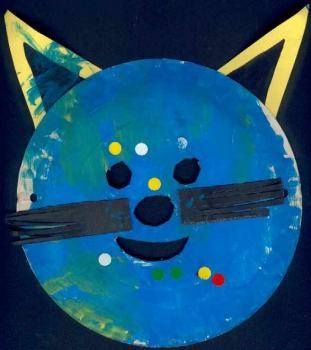
"Masque de Chat" (Cat Mask)
Kevin B.
Age 4
Brussels, Belgium
(Courtesy: The Naural Child Project)
I agreed to begin working that following Tuesday. I believed the first observation I should make was to see how these ethics are put in action. The cornerstone ethic of SUN schools I learned was that learning "involves personal discovery, action, observation and reflection" and that their creative, hands-on active education program "is a process of respecting one’s self, the arts, and our connections to others and the natural world." I agreed to myself I would serve as a volunteer in a number of these after-school classes and volunteer and instruct the children under these guiding principles of personal discovery, action, observation and reflection, in my optimistic hope to uphold these virtues for the sake of these children, to see to it they didn’t have a difficult time in elementary school like I had, one with a lack of guidance and leadership.
October 14th of las year was the first day I volunteered. It was a Thursday, and I asked Joshua Green, the SUN program supervisor, if there was a specific class that needed volunteers. He said that the Beginners Chess class could use some help in Room 108. I agreed to head on in and help out, for I knew enough about chess to teach and have always found it to be a game great at improving decision-making, critical thinking and motor skill abilities.
I was told basically to help keep the kids motivated and to stay focused in their games. Occasionally, there was a student who would get exhausted or burnt out playing or thinking for so long, so you would expect children to often get up out of their chairs and trance around the room. All in all, I was impressed by how engaged all the children were in their games and as I saw the victorious smile or epiphany of thought on each occasional face, I found it to be a golden opportunity to witness a personal discovery, so I ask the child, "How do you feel?" or "Why did you make that move?" One answer I still remember from this second grade boy, in setting up a checkmate three moves later, is, "I feel patterns, I felt this one!"
That answer impressed me, and that had me thinking for about ten minutes after class. I asked the pony-tailed goombah Beginners Chess instructer if he takes on this same sort of personal discovery exercise and what his thought was on that second grade boy’s answer. He said, "It definitely means a lot, it shows they treat chess more than just a game!"
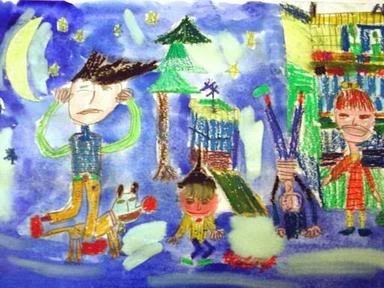
"Play in the Moon Night"
Cio Y. W.
Age 7
Taichung, Taiwan
(Courtesy: The Naural Child Project)
In the first week of class, I recall reading Komives’ "An Introduction to Leadership", where she and several other scholars decide to define leadership as "a relational process of people together attempting to accomplish change or make a difference to benefit the common good." With the times ever changing, it’s no wonder how much more difficult it is than ever to relate or uphold responsibility for so much. Komives adds to this insight by quoting from P.J Palmer’s publication "The active life: A spirituality of work, creativity, and caring" that often we envision ourselves in a "spiritual renaissance" and are often involved in "a renewed search for contemplative values in the flurry of our active lives."
Already, I had begun to feel and appreciate what makes Buckman Elementary a special school that stands out among many others, and already believed the school truly fostered the respect of diversity and committed to embracing the full potential of each child, but I knew another important step was to identify just what makes the leadership efforts here exemplary, efforts which so many other swchools would envy to adopt.
Peter Vaill, a professor from the University of St. Thomas, likes to think of these times as "swirling rapids of permanent white water" and that simply working harder is not the way to fight the tides, but rather working smarter. Working smarter collectively, knowing that "collaborative practices build more community and commitment than isolated, individual actions do.", reflectively smarter in taking the time to make sense out of what is happening "in order to gain perspective and understanding" and "keep a sense of common purpose" and spiritually smarter in being aware of our values that help shape our character. In this co-op personal leadership approach, Vaill claims we can gain new insight and understand and recognize paradigms and the progress we’ve made.
Thinking this lesson over had me reflecting on my days as a boy in Warder Elementary, where I felt, perhaps, the problem with my old school was it was one of those isolated, individual communities Vaill was talking about. There was no collective or spiritual structure, and reflecting back on the experience I thought of Warder as having a "play it as we go" approach rather than a sense of collective reflective insight. I took that particular thought to heart and decided to let it relate to my next volunteering experiences, where "reflection" would come to play and I would also take the time to observe several other classrooms and see how they operated.

On October 26th, I volunteered to help out with Storytime Players, a class where you not only read stories to the children, you also have them act out the stories. We were reading, "A Bad Case of Stripes" by David Shannon, a book about a young girl named Camilla who tries to be like everyone else and, though she loved eating lima beans, refuses to eat them so she could be liked by everyone else. Then she finds herself waking up one morning with stripes all over, and goes through endless predicaments until she decides to eat lima beans and then is brought back to normal.
After finishing reading the book, I asked the children, "Why did eating lima beans take away Camilla’s stripes?" One third-grade girl in a red Pooh shirt said, "Because she found out it’s important to be yourself!" Then I asked, "Have you ever seen a striped person?" and after a unanimous sonance of "No!", another girl answered, "But it doesn’t mean other things don’t have stripes...zebras and tigers have them!"
Again, the answers these two girls made were exactly the answers I was hoping to hear. Like Camilla in her story, this very week I was learning about understanding yourself as an individual in leadership. We often get so indulged into something, we also tend to forget about thinking of the things that shape our personal identities and motivate us each step of the way. Self-awareness is one key motivator in building character, something which Camilla developed late in the story. Komives mentions that "high self-esteem is a result of valuing your self-concept." Bette Midler, one woman I have an immense respect and admiration for, is also quoted for saying, "I didn’t belong as a kid, and that always bothered me. If only I’d known that one day my differentness would be an asset, then my early life would have been much easier." It is people like Miss Midler who have influenced me to stay strong. I mean, when you are working on a pineapple farm in much of your young life and surrounded by those who doubt you can make it big time despite having your own self-determination and summoning of will, and the next day you become "The Rose", that's just inspiring. I still cry everytime I see the end of this classic movie, with her hardcore hippy attitude yet downhome charm, and she just had too much to drink and crawls to her hometown concert she's performing at, and then sings her heart out before passing away on stage. One of my favorite single performances ever.
I saw Midler in their eyes. The two girls spoke in a tone filled with self-confidence; they knew that you may never be able to change some things about yourself, but you can always rely on your strengths and influences to build self-esteem and to learn more and more. It was then I decided, "How about we act out this story now!". I told a girl acting out Camilla to, as she played her role, act out her lack of self-confidence before and her gaining of it in the end. And through one cut, the girl did just that!
It was this experience that I felt set example to their ethic of "focusing on the whole child". Here, I saw a clear example not only of personal discovery, but of all four essentials. In action I saw the girl perform the role of Camilla, in finding her self-esteem. I observed the two girls in their thoughtful answers and the one performing as Camilla and their contributions to the class. And, finally, I saw these examples reflecting the core of the values system adopted at Buckman.

Two weeks later, on November 9th, after suggesting to the teacher of Storytime Players to choose a story that also incorporates the moral of understanding others, she decided on "Giraffes Can’t Dance" by Giles Andreae, a book about a giraffe who wants to dance, but with crooked knees, jellylike neck and long wobbly legs, is the laughing stock at the annual Jungle Dance, until a cricket tells him that those who are different "just need a different song" and then finds his voice to the music of the moon, where his soulful dancing wins over the whole animal kingdom and teaches young readers that everyone can be wonderful, and we will in embracing the voice within.
I was reminded earlier in the year when learning of the social learning approach, which J. Thomas Wren explains under moral development. After you govern yourself and find your integrity or find your voice, it takes observation to be able to relate or interpret other everyday life situations. Albert Bandura, a modern social psychologist, believes that "the fundamental approach of social learning theorists is based on the recognition that behavior is in large measure determined by situational factors outside the individual" and that the individual plays a major role in analyzing the situation through psychological response.
In other words, it’s basically the notion of "It takes a whole village to raise a child" all over again, in that we all must "attend to actions of others" and witness the situations, remember what happened and also what happened to who was being observed, choose to imitate or not according to our moral conscience, and treat each evaluation as a learning experience.

"How a Seven Year Old Sees Van Gogh"
Silas K.
Age 7
Texas, USA
(Courtesy: The Naural Child Project)
Ultimately, through understanding yourself and observing others, then interacting among others, you grow to acknowledge the importance of community, which I once again indeed felt since the first day walking down those colorful halls. Komives likes to think of building community as "creating a feel of ‘we’ out of lots of ‘I’s’" William B. Gudykunst, a professor of speech communication at California State University, believes there are seven community building principles; be committed, be mindful, be unconditionally accepting, be concerned for yourself and others, be understanding, be ethical, and finally, be peaceful. Following this mental model, Gudykunst claims individuals "will listen more keenly, seek resolution of differences, respect each other even when there are disagreements on specific issues, and be generous and patient."
In the weeks following November 9th, I looked at the big picture, and saw for myself what I saw in Beginners Chess and Storytime Players, from helping bake Greek sugar cookies in International Cooking to teaching kids about Van Gogh in Artventures. Teachers committed to the futures of the children, teachers and community volunteers unconditionally accepting to the questions and concerns of parents in-between periods and after school, and, all in all, one strong understanding, appreciative, peaceful environment. I felt I was taken in and accepted as part of the community, and have felt a proud sense of satisfaction, witnessing relations between children and teachers and the community blossom, first by understanding my role, then understanding the roles of others, and finally identifying our roles together in this community.
William Butler Yeats once said, "Education is not the filling of a pail, but the lighting of a fire." In my experience I’ve found not only have I helped see the fire light in each child’s heart, but in my own, for I have been blessed to know a school which brings out the best in us all and influence the whole community at large, and I will be forever grateful for serving Buckman Elementary these past seven weeks.

"Indonesia Traditional Dance"
Grace Florencia C.
Age 12
Surabaya, East Java, Indonesia
(Courtesy: The Naural Child Project)
My final thought for now is this: Do it for them. If you've been busy with work and haven't gotten to watch over your kids as much as you usually like, give them a hug when you get home or before you go to bed. Ask them how their day was in an inviting, comforting tone. It is essential especially under a difficult current social climate like this, where ever so often our kids can come home with the bleeding questions like, "Mommy, is what I heard on the news true?" or "Dad, why are you sad?".
I think it's incredibly sexy to have a positive outlook in life and summon the will to smile through each storm. I don't think it's disingenuous to smile when there are so many problems in the world. Rather I think of it as sexy, as therapeutic, and healthy. I'm just going to get up each morning as always, put my bare feet on the ground, leap out of bed like Tatiana Grigorieva (my lil' Aussie appreciation tidbit of the day! ) and let my hair swim and my hips shake down the street, wearing my signature smile. I'm going to do it, and smile, for the children, and for myself.
And I don't deny that there is much work to be done, and I'm committed to my activism work as always. I believe the money our schools receive is mismanaged, titles keep changing, there’s a high turnover rate in leadership, reorganization is constant and inconsistent, there's this tendency to jump on new trends that are costly and imperfected, and faculty positions continue to rotate, all unhealthy elements for the public school system and...for our children.

"Esmeralda"
Sara B.
Age 6
Milano, Italy
(Courtesy: The Naural Child Project)
I strongly disagree with the No Child Left Behind Act because it's a siege on the public education system, rooted on empty promises, false dichotomies, helter-skelter, punishment to underperforming schools, and the allowing of privatization to as much as a child’s future. I mean, how could you possibly consider NCLB a focus on the whole child and integrating the full range of humanities, arts and sciences and social diversity to them when the NCLB act has not been tested and promotes more transience than ever before, and focuses on a strict curriculum of reading and math test scores. Those who succeed the first time in these tests are privileged in learning various other subjects, while those struggling with these tests are stuck with a basic "Reading First" program. In result of this, you always see what some activists like to think of as a "packaging over content" approach to the children.
I disagree with all that. The children deserve more, and understanding these politics only opens up the soft spot in my heart for them ever more in the need to have them dance like the giraffes in their beloved book.
More than just the children are being hurt by NCLB too. The NCLB puts an immense amount of pressure and distrust on public schools, expecting each school to reach a threshold of performance or will face consequences or sanctions by the government. No Child Left Behind is more testimonial than it is scientific and schools are being eyed like a hawk under a "Hawthorne effect", also known as the theory there's a tendency to work harder and better when under pressure. But through a strict studying as this, many academic studies have found relations among faculties have suffered or been squandered in the process.
You always hear that a relationship is based on trust and communication, and building such relations in the school environment is the necessary step to beginning to resolve these conflicts. Activists and teachers alike must act and communicate accordingly and respectfully. Norms must be established to stop the reckless constant reorganization process, so teachers and education advocates can save their breathes and make their voices heard for the good of the community. A code of ethics must be agreed upon and adopted in a diplomatic process through schools and organizations alike, mission statements which acknowledge the fundamental need to "teach the whole child" and teach as a community of learners. Finally, the money must be managed responsibly and the general public must be convinced that these schools need the money, not the lip service.

"Noc"
Angelika S.
Age 12
Bydgoszcz, Poland
(Courtesy: The Naural Child Project)
Angela Schwindt said, "While we try to teach our children all about life, our children teach us what life is all about." If we deny each child the education he or she deserves, we are denying ourselves the gifts and blessings the children can give to the world. In returning our trust to the child, to the teacher, to the citizen, we’ll restore a sound leadership which will lead to fiscal responsibility, stronger relations and motivation among educational groups nation-wide, and in return, we return the great essence of the community and, most importantly, the essence of life.
And THAT is exactly why I am obsessed with talking about children all the time. We not only reward them, we are rewarding ourselves in enriching their lives. I believe so much needs to be done, while I am optimistic each day, because I have felt my heart open to many children at Buckman and in Colorado and believe in our children and that the ethics of SUN schools can echo throughout the heartland of this great nation.
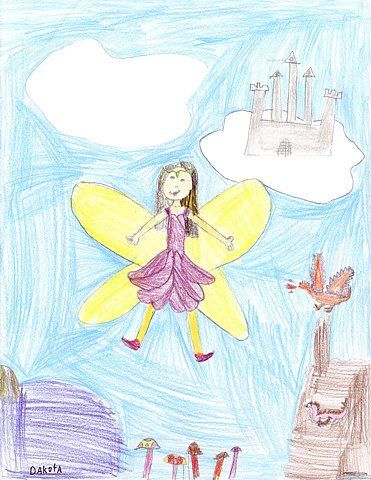
"Fairytopia"
Dakota W.
Age 8
California, USA
(Courtesy: The Naural Child Project)
I
 Children!
Children! Love,
Noah Eaton
(Mistletoe Angel)
(Emmanuel Endorphin)

















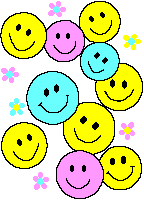





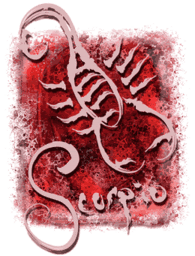



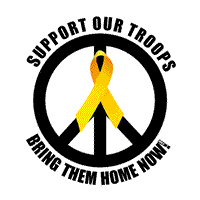














0 Comments:
Post a Comment
<< Home